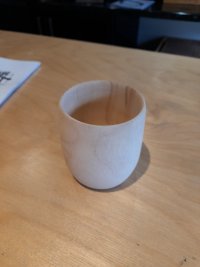I bought a Kuksa from an independent Swedish seller (it was quite expensive) - I loved it and used it constantly lately, but then it developed a crack along one edge. I can't think why as I followed all the instructions. All I did that was "different" was to give it a sanding with a very fine sandpaper to smooth it as it was a little rough. Now I've bought a new, also quite expensive one via Amazon, from Nordic_art_store, advertised as from curly birch. I want to do what I can to avoid this one getting a crack too. I have also sanded it very lightly, but was that a mistake? Do I need to do something to the surfaces I sanded?
I read something about the growth rings on here, but I can't really judge as they vary. Mine are quite wide (near 1cm) in places. Any advice most welcome, I'd like this one to last and not to have to buy another, funds aren't endless ;-)
I read something about the growth rings on here, but I can't really judge as they vary. Mine are quite wide (near 1cm) in places. Any advice most welcome, I'd like this one to last and not to have to buy another, funds aren't endless ;-)

